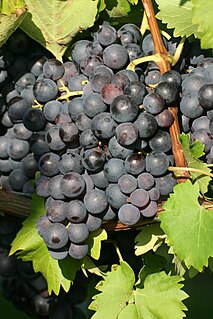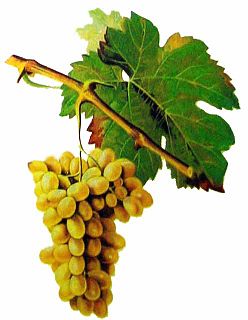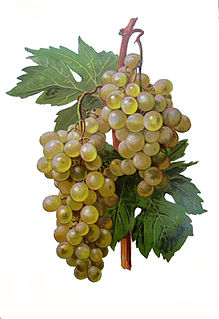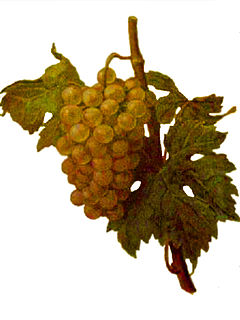Synonyms
Over the years, Luglienga has been known under a variety of synonyms including: Agliana, Agosenga di Aosta, Agostenga, Agostenga di Aosta, Agostinga, Augustaner weiss, Augustauer, Belle Alliance, Blanc de Bovelle, Blanc de Champagne, Blanc de Pagès, Blanc précoce de Kientzheim, Blussard weiss, Blussart weiss, Bona in Ca (in the Trentino wine region), Budazgoher, Buona in casa, Burchardt’s Amber Cluster, Busby’s Golden Hamburgh, Champion Dore, Charnu, Early Kientzheim, Early Leipzig, Early Green Madeira, Early White Malvasia, Fresa di Mensa, Frueher Grosser Malvasier, Frueher Grosser Gelber Malvasier, Frueher Leipziger, Frueher Orléans, Fruehweisse Zibede, Gelbe Seidentraube, Gosvabne Zhelte, Golden Hamburgh, Gros blanc, Grove End Sweetwater, Guštana (in Slovenia), Hedvábné žluté, Hodvábne žlté, Joannen Charnu, Joanenc, Joannenc, Jouanen, Jouanenc (in France), Jouannenc, Jouannene, Juanen, Julliatique blanche, Karmelitanka bijela, Kientsheim, Krim ai Izium, Krim ai Izyum, Krym ai Izyum, Krymskii Rannii Vinograd, Lignan, Lignan blanc (in France), Lignenga (in Piedmont), Lilanica, Limian, Linian, Linian belii, Linian Belyi, Linyan, Linyan Belyi, Lugiadega, Ligiana bianca, Lugliata, Lugliatica (in Piedmont), Luglienca, Luglienco bianco, Luglienga, Luglienga bianka, Luglienga bianca, Luglienga verde, Luglienchis, Lugliolina, Lugliota, Lulienga, Luigese (in Liguria), Madalénen, Madeleine Alb, Madeleine blanche, Madeleine verte de la Dorée, Madlen belii, Madlen Belii Rannii, Margit Fegher, Margit féher, Margit Korai Feher, Meslier, Précoce de Hongrie, Précoce du Vaucluse, Pulsar Belyi, Pulsart blanc, Ragusaner weiss, Raisin de la Saint-Jean, Raisin de Vilmorin, Ranka, Rognaneau, Rumamellas, Saint John‘s, San Jacopo, Santa Anna di Lipsia, Seidentraube (in Germany and Switzerland), Seidentraube Gelb, Selkovaia Kist, Shelkovaya Kist, St. Anna di Lipsia, Uva Buona in Casa, Uva Pastora, Uva di Sant'Anna (in Piedmont), Vert Précoce de Madère, Vigriega, Waelsch Gelb and Weisser Kilianer. [3] [1]














